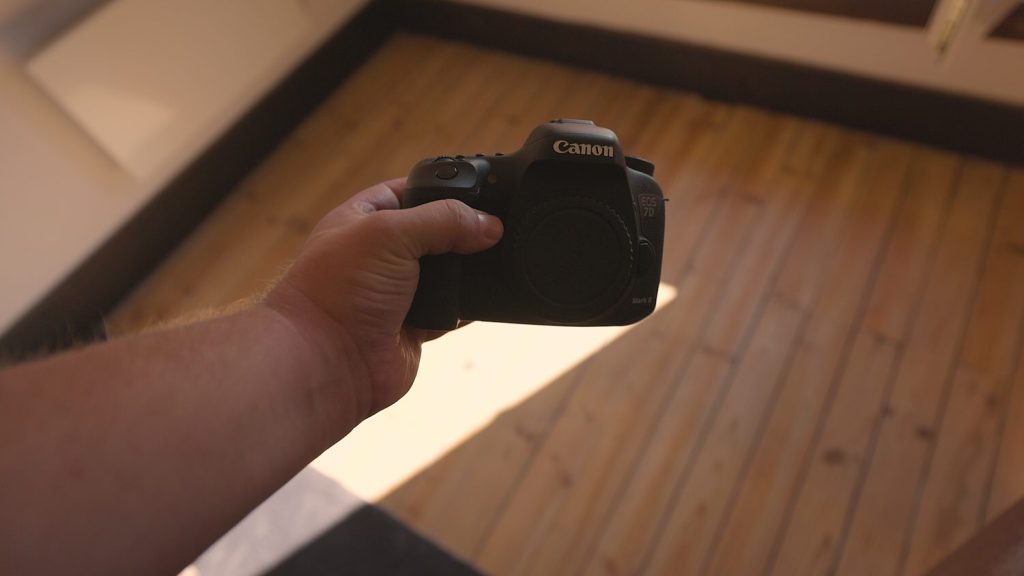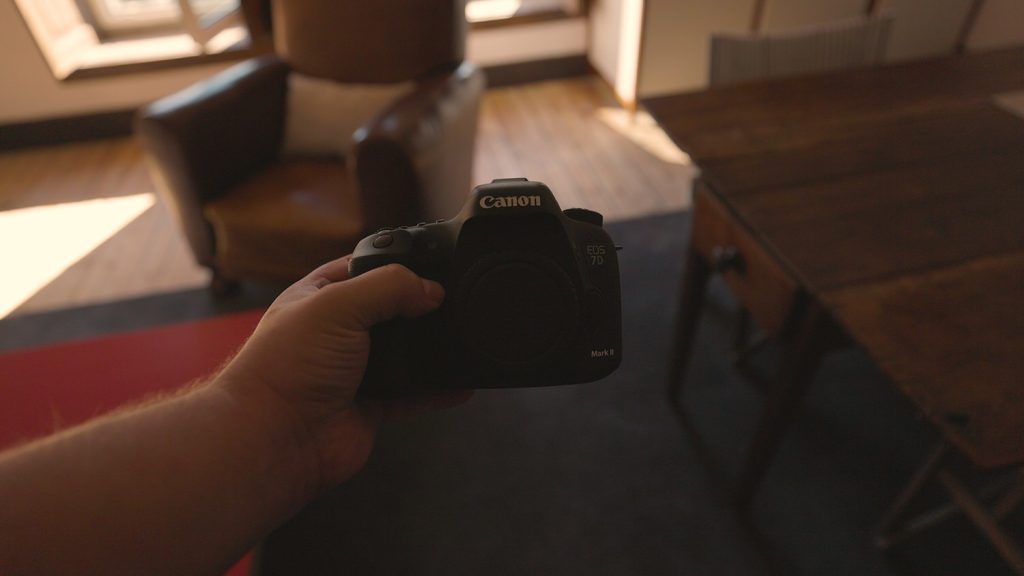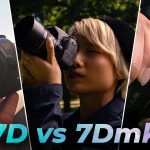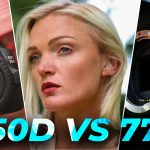In this article we’re going to have a look at the Canon 7D Mark II, originally released all the way back in 2014. I’m going to not only cover what this camera can do, and what it can’t do, but who should buy it.
As a quick note, the B-roll for the video above was shot on the Canon EOS R5, with the RF 15-35mm f2.8 L IS USM lens. Figured I’d mention this, in order not to cause any confusion.
And now, let’s start off with the size & build.

Size & Build
The Canon 7D Mark II camera is 5.85 x 4.43 x 3.08 inches, and weighs approximately 32 oz., or about 907 grams with battery and card.
The camera is rugged, primarily made of a magnesium alloy, and it’s built like a tank. In addition to that, it has enhanced environmental sealing, which means you don’t have to worry about getting it a little wet.
The first thing I noticed when I picked it up is how much larger it is, compared to other Canon cameras. The DSLR I had before this was a Canon 77D, and the difference in size is immediately noticeable.
The Canon 7D mkII feels great in your hands, and it makes you feel like a pro, especially if your previous camera was something like a T6 or T7.

Sensor
The Canon 7D mkII has a 22.4 x 15.0 mm APS-C sensor. You can take 20MP JPEG and/or RAW photos, which equates to a photo resolution of 5,472 x 3,648 pixels.
The ISO ranges from 100 to 16,000 and in special modes you can even reach 25,600 and 51,200. This doesn’t mean much though, as with most cameras, once you go over 10,000 ISO or so, images can start to get rather grainy.
In my shoots, I try to never go past 2000 ISO, but that’s just my preference, and the environment you’re shooting in is also a huge factor to consider.
Image Quality

To clarify, I’m not saying its dynamic range is bad, I’m just pointing out that the camera is around 8 years old at this point.
Dynamic range isn’t as great as on some of the newer expensive DSLRs, due to the fact that the 7D mkII came out in 2014, but if you can control the light, or manipulate it to your needs, this will rarely be an issue.
Shutter
When it comes to continuous shooting, the 7D mkII can manage 10 frames per second. This is really useful when shooting moving subjects, such as in sports, or nature photography.
The reason is that this allows you to take ten separate images in one second, thus increasing the chances of you capturing the right moment when your subject is in motion.
The burst length is a maximum of 31 frames when shooting in RAW, which you should be doing, and 1090 frames when shooting in JPEG. The only other limitation might be your SD card, but if you bought one fairly recently, it shouldn’t be an issue.
Display
The 7D mkII comes with a fixed 3″ display. This model does not have a swivel screen. As the screen can not be moved around, this not only makes vlogging more difficult, but it also makes it harder to shoot from awkward angles.
It also has a top LCD display, which is quite generously sized, and has a backlight, which is helpful when shooting in low light conditions.
Photographers have differing opinions as to whether the top LCD is really needed or not. I like it though, so I’d rather have it than not.

Control
What is immediately obvious is that the 7D mkII retains a similar button and knob layout to many other Canon cameras.
To those who have used Canon cameras before, using it should feel rather intuitive from the very start.
On the back, just above the wheel, you even have a small thumb controller, which I quite like. It allows navigation through menus to be rather seamless.
Storage
One of the reasons why this camera feels ‘pro’, is because of the dual card slot. You have your usual SD card slot, and a Compact Flash, or UDMA slot.
When shooting events for example, each photo or video is saved to both cards, thus giving you a backup in case one of them fails.
Battery Life
In terms of battery, the camera uses a larger-capacity LP-E6N battery. Given the fact that the 7D mkII was discontinued years ago, your battery is likely to be a few years old at this point.
As a result, even though they were initially rated at 800 shots, they will naturally have a diminished capacity.
How much charge they can actually hold will depend on when the battery was manufactured, how many photos were taken with it, and how many times it has been recharged.
Longevity
Note that the Canon 7D mkII shutter is rated at 200,000 actuations. What this means is that you can take around 200,000 photos with it, before the shutter fails.
When purchasing this device, the number of shutter clicks will usually be advertised by the seller. If it’s not, contact them and ask first.
Now, if they’re refusing to tell you, or saying that they don’t know, it probably means that it’s close to the maximum, or even over it, and I’d personally just look for a different seller.
If, for example, the camera has 150,000 actuations left, in order to use up the rest over say, five years, you’d have to take 82 photos every single day.

Video
The 7D mkII can shoot video at 1080p, with a maximum frame rate of 60fps. When it comes to the file type, you have a choice between MOV or MP4.
In 2022, when it comes to video, I wouldn’t really use an 8 year old camera. For photography, sure, but for video, I’d go with something newer, like the Canon 77D, or even the Canon R series.
Compatible Lenses
In terms of lenses, the 7D Mark II can use EF and EF-S lenses, which gives you an almost inexhaustible list of glass to choose from.
I’ve tested this camera with a few different lenses. If you go back in the article, where I showcased photos, I’ve included which lenses they were shot with, just so you can get an idea of what they can do.
Conclusion
So in conclusion, who should buy this lens?
Being that the camera is around 8 years old at the time of me making this article, it’s not one that I’d recommend for video. It can do video, 1080p at 60fps, but there are a lot of affordable cameras out there that would be much better suited.
For photography, as you can see in the examples that I’ve included earlier, you can get some fantastic results, if you know what you’re doing.
Ultimately, if you’re looking to get your hands on your first DSLR, or you’re looking to upgrade from an older Rebel series camera, this might just be the one for you.
If you’d like to have a look at any of the products mentioned in this video, or you would like to know how much they cost in your country, you can find affiliate links down below.
Thank you for reading my review of the Canon 7D Mark II. I invite you to have a look at some of my other articles. We have something for everyone, whether you’re interested in audio, or cameras and lenses. Alternatively, if you prefer video reviews, feel free to have a look at my YouTube channel.
Product Links
Down below you will find all of the items I talked about in this article.



